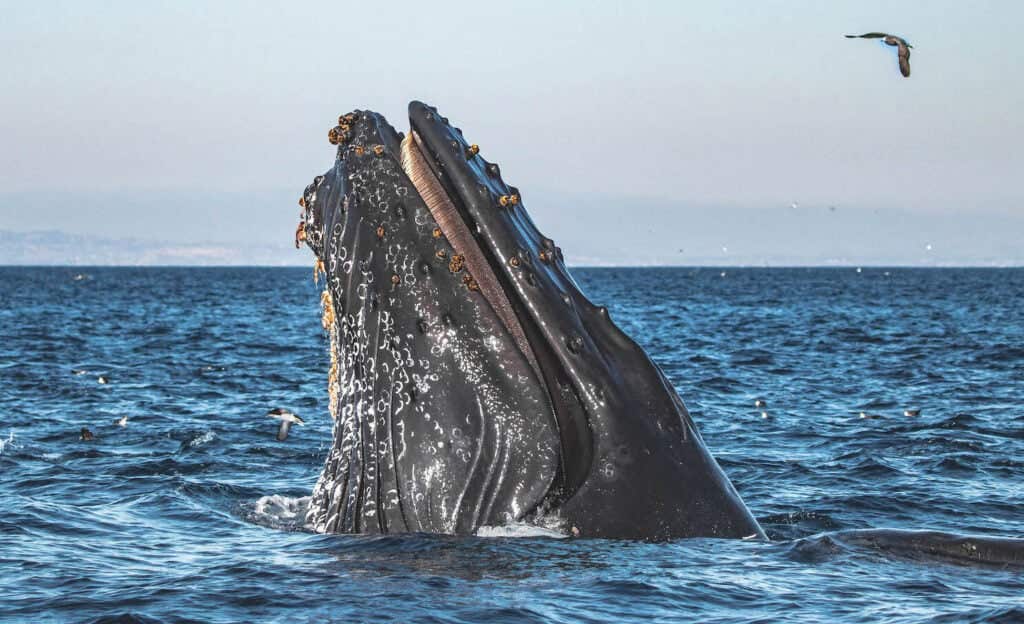Whale bone tools from 20,000 years ago expose ancient coastal life
New study shows early humans used whale bones as tools 20,000 years ago, offering insight into marine life and coastal survival.

A new study reveals that humans used whale bones as tools 20,000 years ago, unlocking secrets of ancient coastal life and ocean ecology. (CREDIT: Domenic Biagini and Gone Whale Watching)
Long before ships sailed the oceans or factories hunted whales for oil, humans living near the Bay of Biscay were already using these massive sea creatures for survival. A new study has shown that as far back as 20,000 years ago, people were making tools out of whale bones. This discovery changes how we think about early coastal life and gives us fresh clues about the ancient ocean environment.
The research was led by scientists from the Institute of Environmental Science and Technology at Universitat Autònoma de Barcelona (ICTA-UAB), along with partners from the French National Centre for Scientific Research (CNRS) and the University of British Columbia. The findings were published in Nature Communications, confirming that early humans along Spain's northern coast used whale bones not just for survival, but as tools for daily life.
Digging Into the Past
Researchers examined 83 worked bone tools and 90 unworked bone fragments found in and around the Bay of Biscay. These items came from caves and shelters used by humans during the Upper Paleolithic period, known as the Magdalenian era. Scientists used advanced methods like Zooarchaeology by Mass Spectrometry (ZooMS), radiocarbon dating, and stable isotope analysis to study the bones.
"Our study reveals that the bones came from at least five species of large whales, the oldest of which date to approximately 19,000–20,000 years ago," said Jean-Marc Pétillon from CNRS.
Among the whale species identified were fin whales, sperm whales, blue whales, and gray whales. These creatures still swim in the Bay of Biscay today—with the exception of the gray whale, now mostly found in the North Pacific and Arctic. One sample even came from a porpoise.
"ZooMS is a powerful technique for investigating past sea mammal diversity, particularly when diagnostic morphometric elements are missing from bone remains and objects," added Krista McGrath, the paper’s lead author.
Out of 173 samples, only four could not be classified. Nearly 90% of the whale bones visually identified by researchers were correctly confirmed through ZooMS. Interestingly, a few bone fragments thought to be from whales turned out to be from large land animals like mammoths and rhinoceroses. Their porous appearance had fooled even seasoned archaeologists.
Related Stories
A Changing Ocean
The chemical fingerprints left in these bones tell us more than just their age or species. They also offer a window into how whales used to feed, and what the ocean was like back then.
Using carbon (δ13C) and nitrogen (δ15N) isotopes, the team discovered that these ancient whales had slightly different diets than their modern counterparts. These differences hint that the marine environment of the past was richer, and possibly colder. Some whales may have foraged in a way similar to today's arctic whale populations, giving us a rare glimpse of ancient ecological conditions.
The presence of multiple whale species in the region also highlights how rich the Bay of Biscay ecosystem once was. This coastal area, now partly underwater due to sea level rise, used to be a hotspot for marine life. These remains were brought inland, likely from scavenged whale carcasses or organized group hunts.
In fact, many items found at these sites—such as whale barnacles, seal bones, and shells used as ornaments—point to a deep connection between humans and the sea. These discoveries suggest that coastal living wasn't just about survival. It was a complex, evolving relationship with the ocean.
Tools and Traditions
The tools studied ranged from simple bone fragments to shaped and sharpened objects, likely used for hunting, carving, or sewing. Some even showed clear signs of human modification, like cuts and percussion marks. Radiocarbon dating placed the heaviest use of whale bones between 17,500 and 16,000 years ago.
That makes this one of the oldest known examples of humans using whale products to make tools. Most likely, these items were made from stranded or scavenged whales rather than from large-scale hunting. But it shows a sophisticated use of available resources.
Many of these bones came from caves long known to archaeologists, such as Santa Catalina Cave in Biscay. These sites offer not just physical evidence but a timeline of how human behavior evolved alongside nature.
Before this study, only sperm whales had been clearly documented in Magdalenian culture. Now, the inclusion of other species reveals a broader picture. It suggests that prehistoric humans recognized and possibly preferred certain types of whales for their size, texture, or availability.
A Broader Impact
Understanding how ancient humans used whale bones isn’t just a look into the past. It helps explain how early coastal societies developed and adapted. Even though today's shorelines have shifted and many ancient sites lie underwater, these inland findings provide solid proof of early marine resource use.
The study also helps fill gaps in the archaeological record. Sites from this era are fragile and often lost to rising seas. Yet, by analyzing what was brought inland, scientists can still piece together a detailed picture of coastal life.
From barnacles used for food to whale teeth shaped into tools, it’s clear that these animals played a key role. Their bones became part of a toolkit that helped humans thrive during harsh ice age conditions.
As McGrath and her team explain, tools made from whale bones not only tell us about human survival but also about the shifting ocean world these early people lived in. Their study helps researchers understand how ecosystems and human cultures have always influenced each other.
By identifying whale species and analyzing how they were used, this research opens the door for more studies. It can guide future investigations into ancient diets, migration routes, and even climate changes.
Whether it was crafting a knife or simply surviving the winter, the relationship between humans and whales has deep roots. This study shows just how far back that bond stretches—and how much more there is to learn.
Note: The article above provided above by The Brighter Side of News.
Like these kind of feel good stories? Get The Brighter Side of News' newsletter.



